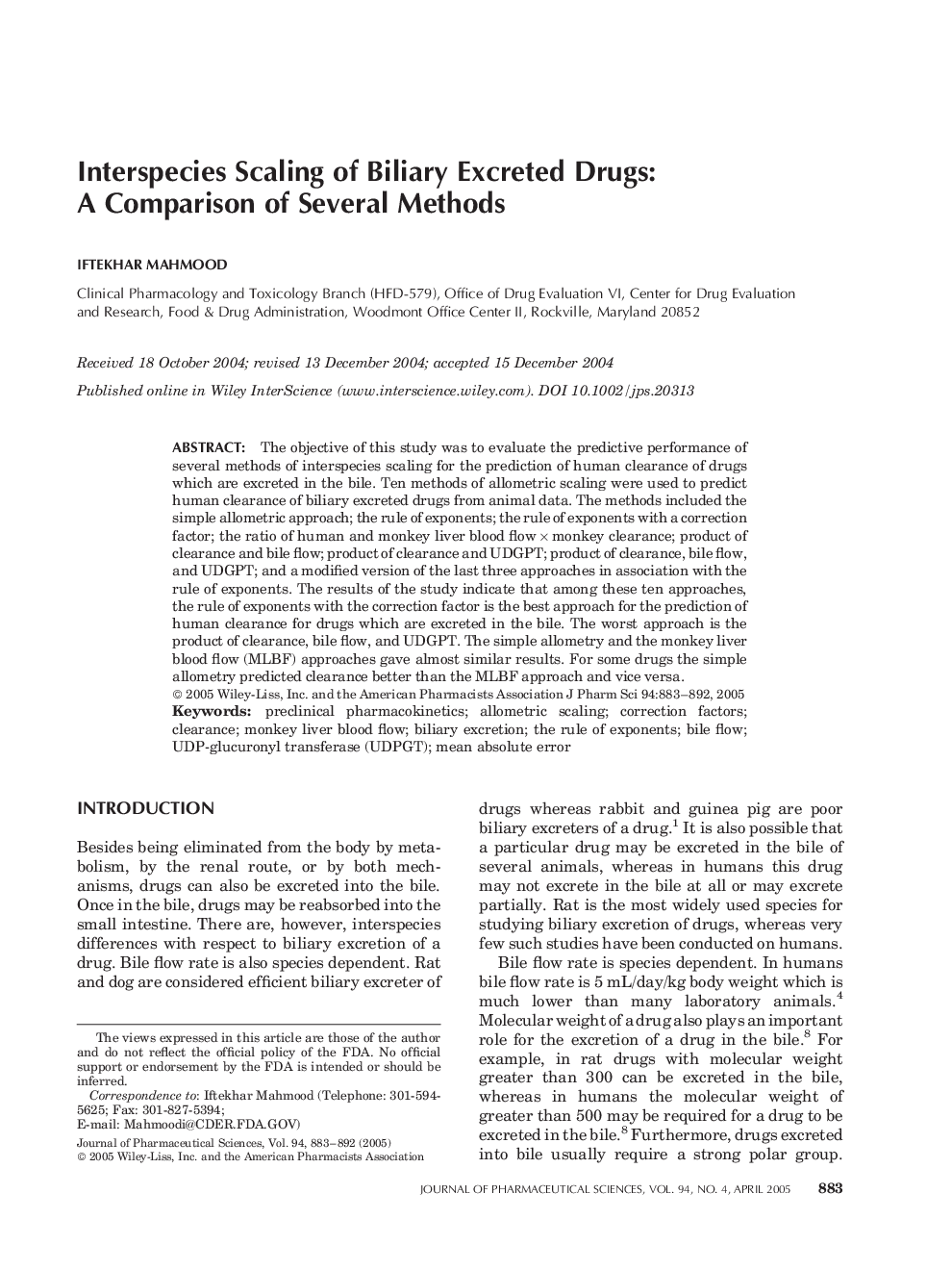| Article ID | Journal | Published Year | Pages | File Type |
|---|---|---|---|---|
| 8994968 | Journal of Pharmaceutical Sciences | 2005 | 10 Pages |
Abstract
The objective of this study was to evaluate the predictive performance of several methods of interspecies scaling for the prediction of human clearance of drugs which are excreted in the bile. Ten methods of allometric scaling were used to predict human clearance of biliary excreted drugs from animal data. The methods included the simple allometric approach; the rule of exponents; the rule of exponents with a correction factor; the ratio of human and monkey liver blood flow Ã monkey clearance; product of clearance and bile flow; product of clearance and UDGPT; product of clearance, bile flow, and UDGPT; and a modified version of the last three approaches in association with the rule of exponents. The results of the study indicate that among these ten approaches, the rule of exponents with the correction factor is the best approach for the prediction of human clearance for drugs which are excreted in the bile. The worst approach is the product of clearance, bile flow, and UDGPT. The simple allometry and the monkey liver blood flow (MLBF) approaches gave almost similar results. For some drugs the simple allometry predicted clearance better than the MLBF approach and vice versa.
Keywords
Related Topics
Health Sciences
Pharmacology, Toxicology and Pharmaceutical Science
Drug Discovery
Authors
Iftekhar Mahmood,
